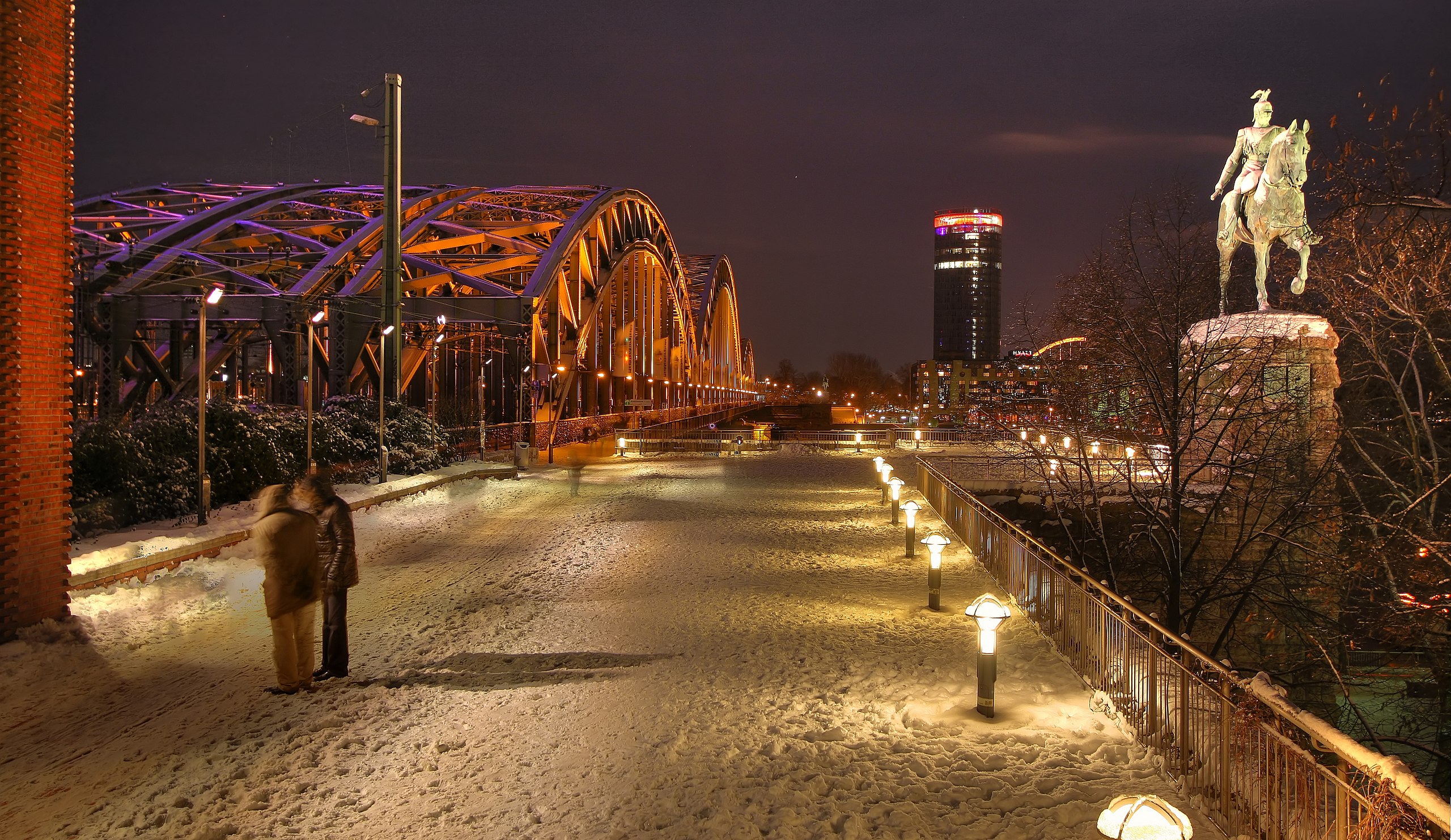The Hohenzollern Bridge: The most important steel truss railway Bridge in Germany
The Hohenzollern Bridge in Cologne, Germany, is an architectural marvel and a symbol of the city's rich history and modern vitality.
Standing majestically over the Rhine River, this bridge is a sight to behold. Its imposing steel structure, with its characteristic truss arch design, is a testament to the engineering prowess of the early 20th century. Constructed between 1907 and 1911, it was built to replace an older bridge and quickly became an essential part of Cologne's transportation infrastructure.
The historical background of the Hohenzollern Bridge is deeply intertwined with the city's development and the events of the time. Cologne, a city with a long and storied history, had been growing rapidly in the late 19th and early 20th centuries. The increasing volume of traffic, both commercial and passenger, put a strain on the existing transportation network. The need for a new, more robust bridge over the Rhine River became evident.
The decision to name the bridge after the House of Hohenzollern was a significant one. The Hohenzollerns were a prominent German dynasty that had played a crucial role in the country's history. Their rule had seen the unification of Germany and the growth of Prussia into a major European power. By naming the bridge after them, it was a way to pay homage to the dynasty's contributions and to connect the bridge to the nation's historical narrative.
The construction of the Hohenzollern Bridge was a massive undertaking. Engineers and workers faced numerous challenges, including the strong currents of the Rhine River and the need to build a structure that could withstand the weight of heavy trains and the elements. The use of steel for the truss arches was a bold choice, as it allowed for greater strength and durability. The result was a bridge that not only met the practical needs of transportation but also became an aesthetic masterpiece.
During World War II, the bridge was a crucial strategic target. As the German army retreated in 1945, the Hohenzollern Bridge was partially damaged. However, it survived the war and became a symbol of resilience and hope for the people of Cologne. After the war, the bridge was reconstructed, a testament to the city's determination to rebuild and move forward.
As one approaches the Hohenzollern Bridge, the four equestrian statues of the Prussian kings and German emperors from the House of Hohenzollern at the sides of the approach ramps catch the eye. These sculptures add a touch of grandeur and historical significance, reminding visitors of the city's past under Prussian rule. They are a visual reminder of the power and influence of the Hohenzollern dynasty and bear witness to the region's complex history.
In recent years, the bridge has gained additional fame for the love locks that adorn its railings. Couples from all over the world come here to attach their locks as a symbol of their love, believing that by doing so, they are sealing their commitment for eternity. While this has become a controversial issue due to the weight of the locks on the structure, it has also added a romantic charm to the bridge, making it a popular destination for lovers and tourists alike.
The Hohenzollern Bridge offers breathtaking views of the Rhine River and the cityscape. Standing on the bridge, one can admire the flowing waters of the river, the beautiful architecture of the old town, and the towering spires of the cathedral. It is a place where history and modernity meet, where the past and the present blend seamlessly.
Whether it's for its historical significance, its engineering beauty, or its romantic allure, the Hohenzollern Bridge remains one of Germany's most remarkable landmarks. It is a bridge that connects people, places, and generations, a true symbol of Cologne's enduring spirit and charm. As we look at this magnificent structure, we are reminded of the power of architecture to inspire, connect, and endure through the ages.








 Certified
Certified


